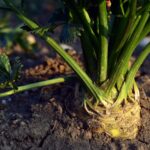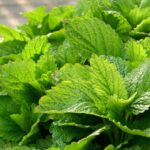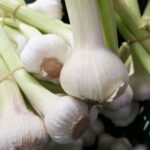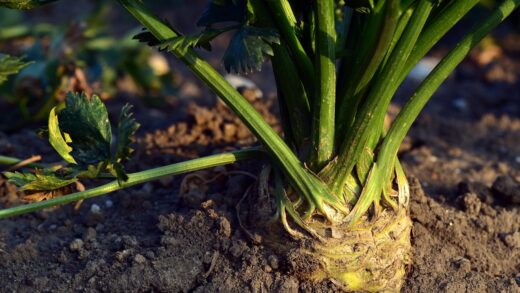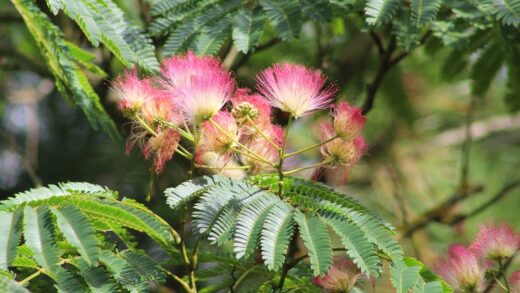The double-flowered plum, more commonly known as the almond cherry or flowering almond, truly floods gardens with its charming pink blossoms in spring, captivating everyone with its beauty. However, for this wonderful ornamental shrub to display its best form year after year, ensuring its proper water supply is essential. Incorrect irrigation practices can not only diminish the quality and quantity of its blooms but also jeopardize the plant’s overall health, making it more susceptible to diseases and pests. In the following, we will detail how to provide professional irrigation for your almond cherry to ensure a bountiful floral display.
The Basics of the Almond Cherry’s Water Needs
To understand the water supply for the almond cherry, it is worth looking back at the plant’s natural habitat and biological functions. This species originates from Northern China, where it has adapted to temperate climatic conditions, with warm summers and cold winters, typically on well-drained soils. Accordingly, the almond cherry prefers soil that is continuously but moderately moist and poorly tolerates extremes, such as waterlogging and prolonged drought. Its root system is sensitive to a lack of air, which can be a direct consequence of overwatering and lead to root rot. At the same time, a lack of water causes stress, which inhibits growth and flowering.
Water plays a fundamental role in the plant’s life processes, extending far beyond mere moisture. Water is a key element in photosynthesis, during which the plant uses sunlight’s energy to produce organic matter for growth. Additionally, the water absorbed from the soil transports dissolved minerals and nutrients from the roots to the leaves and flowers. Water maintains the internal pressure of cells, known as turgor, which gives structure to the plant’s shoots and leaves. Finally, through transpiration, the plant cools itself on hot summer days, a process that also requires a continuous supply of water.
The water requirement of the almond cherry changes dynamically with the seasons and the plant’s developmental cycle. In spring, during bud break, leaf development, and especially the spectacular flowering period, its water consumption is at its highest. In summer, during vegetative growth and high heat, it also requires regular irrigation to maintain soil moisture content. In autumn, as it prepares for the dormant period, its water needs gradually decrease. In winter, during its deep dormancy, the plant’s water uptake is minimal, but it is important that its soil never completely dries out, especially on milder, frost-free days.
The type of soil decisively influences the frequency and amount of irrigation. Sandy soils are well-draining but retain water poorly, so more frequent, smaller doses of watering are needed here. In contrast, clay soils can retain moisture for a long time but are prone to compaction and waterlogging, which can lead to root suffocation. The ideal is well-structured, humus-rich loamy soil, which strikes a balance between drainage and water retention. You can significantly improve the soil’s structure by incorporating organic matter, such as compost or well-rotted manure, thereby increasing its water-holding capacity.
More articles on this topic
The Practice of Irrigation: When, How Much, and How?
Determining the timing of irrigation is crucial for maintaining the health of the almond cherry. The best method is to physically check the soil’s moisture content: insert your finger about 5-10 centimeters deep into the soil next to the plant’s base. If the soil feels dry at this depth, it is time to water. You can also watch for the plant’s external signs, such as wilting leaves, but it is important to know that this is already a sign of water-induced stress. The most suitable time for watering is early in the morning, as this minimizes evaporation loss and allows the foliage to dry during the day, reducing the risk of fungal diseases.
The answer to the question “how much to water?” is the principle of deep but infrequent watering. Frequent, shallow watering only moistens the top layer of the soil, which encourages the plant to develop a shallow root system. In contrast, a thorough, deep watering encourages the roots to penetrate deeper into the soil, where moisture is more stable, making the plant more resistant to drought. For a mature shrub, apply 20-30 liters of water slowly on each occasion, allowing the water time to seep into the deeper layers. The exact amount, of course, depends on the soil type, temperature, and rainfall.
The method of irrigation also greatly affects efficiency and plant health. The most effective and water-efficient solutions are drip irrigation or the use of a soaker hose. These systems deliver water slowly and evenly, directly to the root zone, minimizing evaporation loss and avoiding unnecessarily wetting the foliage. If you are watering with a can, always direct the water to the base of the plant, not onto its leaves or flowers. Avoid overhead sprinkler irrigation, as foliage that remains wet provides an ideal breeding ground for fungal infections, such as leaf spot.
Newly planted almond cherries require special attention when it comes to irrigation. Their root systems, damaged and still underdeveloped from transplanting, cannot efficiently absorb water from the surrounding soil, making them much more sensitive to drying out. For the first one or two years after planting, regular and consistent irrigation is essential for the plant to successfully establish its roots and strengthen. During this period, ensure that the soil around the root ball remains consistently slightly moist, but not waterlogged. Proper water supply during this critical phase lays the foundation for the plant’s future vitality and abundant flowering.
More articles on this topic
Critical Periods and Special Considerations
In the life cycle of the almond cherry, the period before and during spring flowering is the most critical from a water supply perspective. Producing a massive amount of flowers and keeping them fresh requires a great deal of energy and water from the plant. If the plant suffers from a water deficit during this period, it can lead to the drying and dropping of flower buds, smaller and paler flowers, and a shortened flowering period. Therefore, from spring bud break until the end of flowering, it is particularly important to regularly check the soil’s moisture content and provide thorough watering as needed.
Summer heat and prolonged drought also pose a serious challenge for the almond cherry. High temperatures cause the plant’s transpiration rate to increase dramatically to cool itself, which significantly increases its water demand. During hot, dry periods, the frequency of watering should be increased, and care should be taken to ensure that the water deeply saturates the root zone. During this time, applying mulch around the base of the plant is extremely beneficial. A 5-8 cm layer of organic mulch (e.g., pine bark, compost, wood chips) helps to conserve soil moisture, moderates soil temperature, and inhibits weed growth.
The water needs of almond cherries grown in pots or large containers differ from those planted in the open ground. The limited volume of potting mix dries out much faster than garden soil, especially on warm, windy days. For this reason, container plants need to be checked and watered much more frequently, even daily, during the growing season. It is important that the pot has adequate drainage holes at the bottom so that excess water can escape freely and the roots do not sit in water. Using a high-quality, loose-structured potting soil is also essential for ensuring proper water management.
At the end of the growing season, in the late summer and autumn months, the amount and frequency of watering should be consciously reduced. This gradual reduction in water is an important signal for the plant to slow its growth and begin preparing for the winter dormant period. New, tender shoots that form at this time would not be able to mature sufficiently before the frosts and would easily suffer frost damage. By reducing irrigation, you promote the lignification of the shoots, which increases the plant’s winter hardiness and contributes to successful overwintering for the next year. Of course, the soil should not be allowed to dry out completely even at this time.
Signs of Watering Errors and How to Fix Them
Overwatering is one of the most common and dangerous mistakes in caring for the almond cherry. Stagnant water displaces air from the soil particles, leading to the suffocation of the roots as they are deprived of the oxygen essential for their function. The most typical symptoms of overwatering are yellowing and then falling leaves, especially starting on the lower, older leaves. Shoots may be weak, moss or algae may appear on the soil surface, and the soil may have a musty, stagnant smell. If you notice these signs, immediately stop watering and allow the soil to dry out. If necessary, improve soil drainage by incorporating loosening materials such as sand or perlite.
The signs of underwatering are usually much more obvious, but you should not wait for them to appear. The very first and most spectacular symptom is the wilting and drooping of leaves, which feel limp to the touch rather than firm. In cases of prolonged water deficiency, the leaf margins turn brown and dry out, growth stops, flowering fails, and the plant begins to shed its leaves prematurely. Underwatering can be corrected with a thorough, deep watering that completely soaks the root zone. To prevent this, establish a regular watering routine that you adjust based on checking the soil’s moisture content.
The quality of the water used can also affect the plant’s health, although the almond cherry is not one of the most sensitive plants in this regard. Tap water that is too hard and has a high mineral content can, in the long run, lead to the accumulation of salts in the soil, which can inhibit nutrient uptake. If you have the opportunity, the best choice is to collect and use rainwater, as it is soft and chemically neutral. If only chlorinated tap water is available, it is worth letting it stand in an open container for a day or two before watering to allow some of the chlorine to evaporate.
In summary, the secret to successfully growing an almond cherry lies in a proactive and attentive irrigation practice. Instead of watering on a strict schedule, learn to “read” the signals from your plant and the environmental conditions. Regularly check the soil moisture, take into account changes in the weather, your soil type, and the plant’s current life stage. By mastering the correct irrigation technique—deep but not too frequent watering, delivered directly to the base—you can prevent the most common problems and ensure that your almond cherry grows healthily and dazzles you with its abundant flowering year after year.








